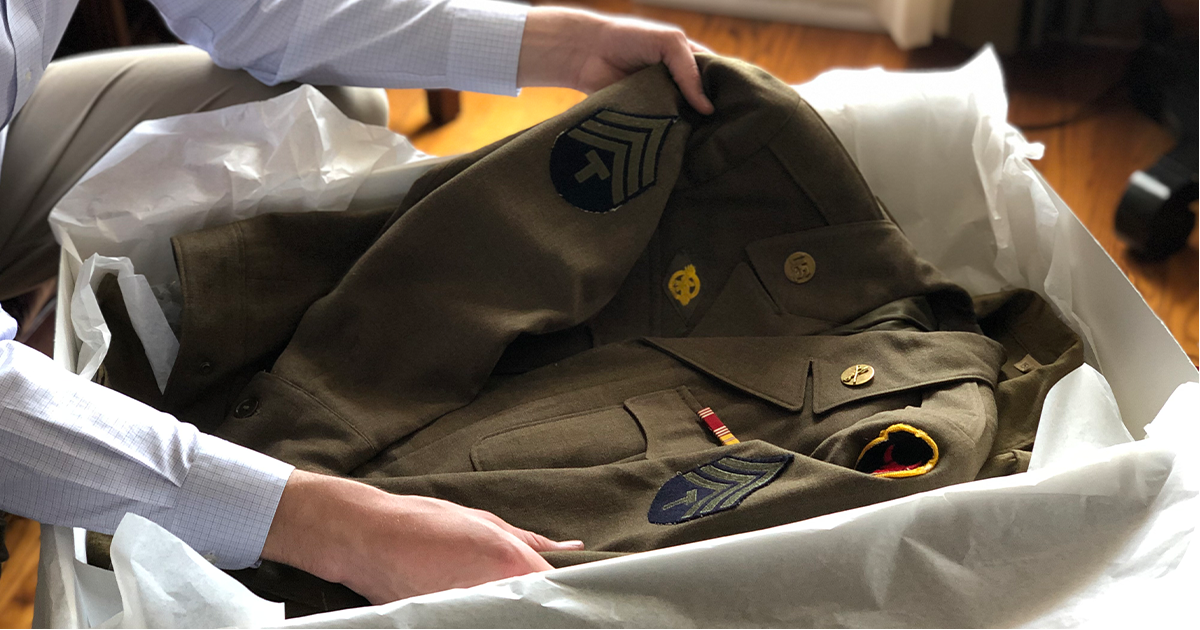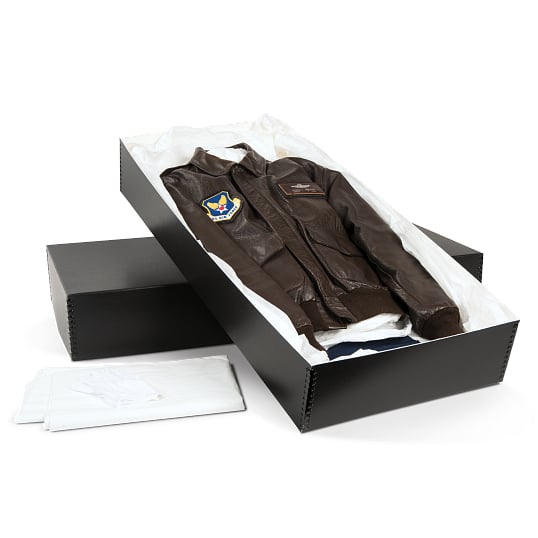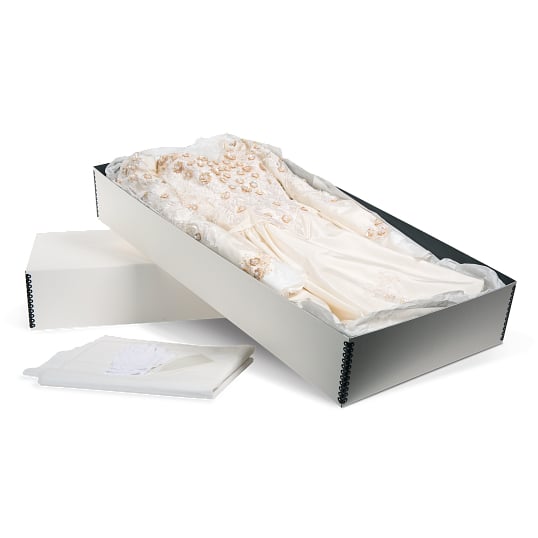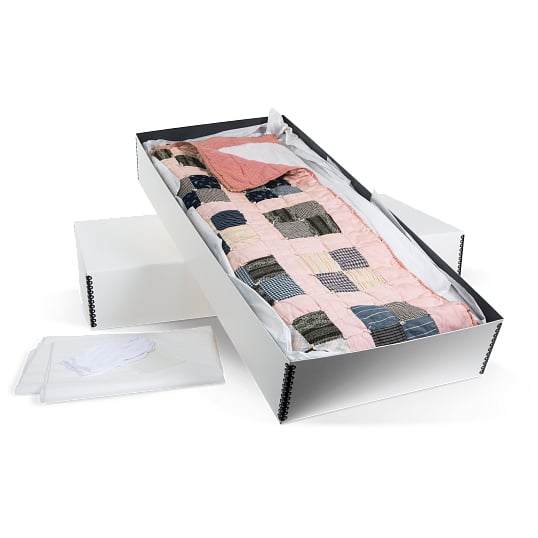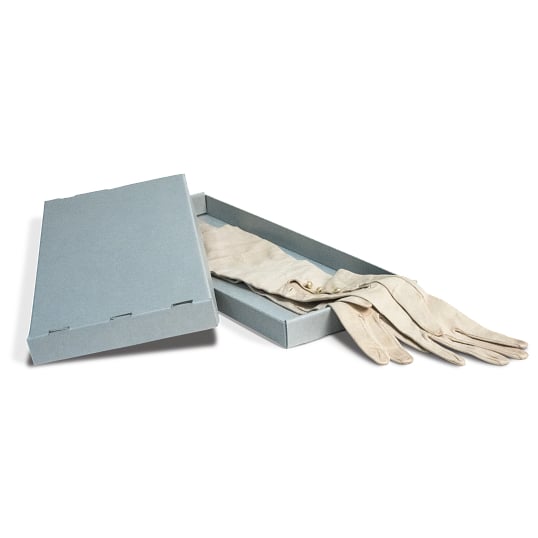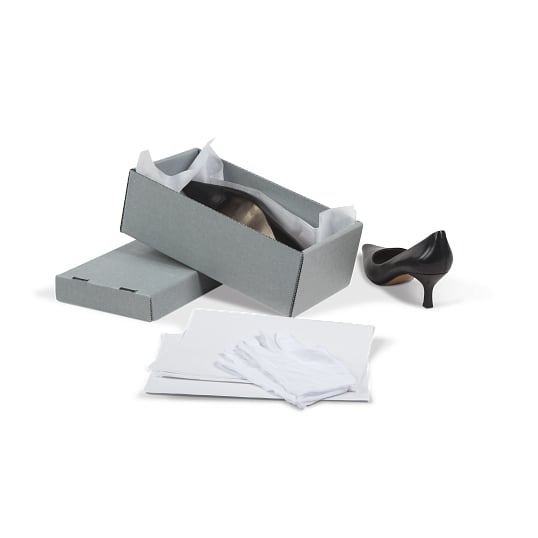
Taking the time to properly preserve textiles can be an extremely rewarding experience. Future generations will be able to see dresses, uniforms and other textiles in their full glory. The basics of preservation for textiles apply to all garments.
As with any guide, these are just suggestions. If you believe you have textiles of historical value, consult a conservator before you do anything. You can locate a conservator near you by using the AIC's Find a Conservator tool.
Important Considerations
Storage Space
- Store your textiles in an area with limited light exposure and consistent temperature and humidity. Popular spots include closets and under beds.
- Avoid storing items in attics or basements as they can have wild fluctuations in temperature and humidity which can accelerate deterioration.
- Keep the storage area clean and free of pests.
- Mothballs and other chemicals should be avoided as they can damage fabric and are toxic to humans.
- Contrary to popular belief, cedar does not reliably deter insects and wood storage speeds deterioration.
Handling
- Before handling any textile, wash and dry your hands thoroughly. Avoid using hand lotions or similar products when working with textiles.
- Remove jewelry. Rings, watches and other items can catch on fabric causing snags or tears.
- Wearing cotton gloves can help prevent soiling of the fabric.
- Label the box so you don't need to unpack the entire box to figure out the contents.
Garment Maintenance
- Modern garments such as wedding dresses or christening gowns should be cleaned shortly after wearing them. Soiling and stains become more difficult to remove as they age.
- Most gowns will require dry cleaning. Always choose a reputable dry cleaner and request fresh or filtered solvent.
- Identify all stains on the item with the dry cleaner before the cleaning process begins.
- The plastic bags used by dry cleaners are not suitable for long-term storage. They off-gas as they age, damaging and discoloring fabrics.
- If a garment needs repair, a skilled seamstress may be able to make the necessary repairs.
- Occasionally, damage to an item may come with a back story. In these cases, you may not want it repaired. Be sure to document any stories associated with a garment so they don't become lost to future generations.
- As always, if your item has historical value or is especially fragile, consult a conservator.
Selecting Storage Materials
Before you start looking at the different storage box options, there are a few things you'll need to know to pick the product that will best protect your item.
- Measure the item! You'll need to know this to make sure you purchase the correct size box.
- When determining the size, you want to make sure the item will fit inside the box with the least amount of folds. Sharp creases and folds can become impossible to remove over time.
- See if you can find/figure out what the item is made of. Archival-quality boxes will indicate if they are made from BUFFERED or UNBUFFERED materials.
- You should choose UNBUFFERED materials if the items are made from or have parts made from animal protein—such as wool, leather, silk, pearls, feathers, or when items are made from materials of unknown origin.
- BUFFERED materials can be used for anything else—cotton and other cellulose or plant-based fibers.
- Pro tip: In most cases, you can use a BUFFERED box for added protection, even with an object or textile made of animal proteins. You will want to wrap the item completely in UNBUFFERED tissue so the item doesn't come into contact with the box.
- Learn more about Buffered vs. Unbuffered Materials.
- In addition to a box, you will also need acid-free archival tissue paper. Tissue sold in craft stores and provided by department stores is often not archival quality and can damage your item.
6-Steps for Perfect Preservation
- Start by lining and lightly padding the bottom of the box. Extend the tissue over the edges of the box.
- Gently place the item in the box.
- Using archival-quality, acid-free tissue, gently pad any folds.
- For dresses, uniforms or costumes, roll tissue to fill out and support the chest, bodice and sleeves.
- Fold the tissue over the top of the item and place the lid on.
- Label the box! This prevents you or anyone else from having to unpack and repack the item which increases the chance of the item being damaged.
But What About My Veil, Gloves, Shoes, Hat, etc?
These items should largely be handled the same way. Be sure to check the materials for each item to determine if they require buffered or unbuffered materials.
Veils - Store your veil in its own clearly labeled box. You want to make as few folds to the veil. Make sure to pad any lace or pearls to prevent them from snagging on the fabric when folded.
Gloves - Use archival tissue to pad the palm and fingers of the gloves for support. Then, they can be wrapped in tissue before placing them in the box.
Shoes - Shoes should be stored in their own box. Pad them with archival tissue to maintain the shape. Wrap in tissue and place in box.
Hats - Hats should be stored in their own boxes to prevent crushing.
- For hats with brim, use a hat mount to evenly distribute the weight of the hat. Line the inside of the hat and support it with archival tissue.
- For items such as fascinators, use archival tissue to gently support the shape and store it in an appropriately sized box. Consider any bows or feathers to make sure the box is deep enough to accommodate them without crushing. Use tissue to support those items, but be sure to be gentle!
For More Information
- Our PDF instructions on Caring for Fabrics and Textiles
- Our Wedding Dress Preservation Tutorial (with Video)
- Preserving Textiles from the National Archives
- How do I store antique textiles at home? from the Smithsonian

